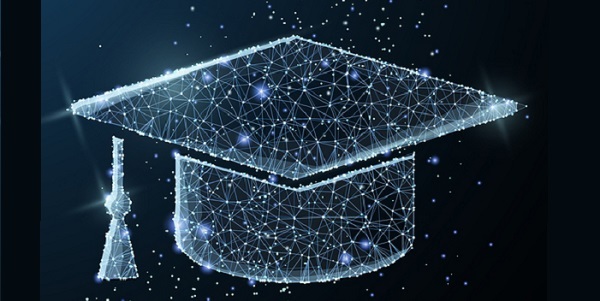Blockchain Technology in Education

What is blockchain?
- The digital ledgers or databases that store information are considered as ‘blocks’ and these ledgers are coupled together to constitute ‘chains’. This is called blockchain.
- Copies of the blockchain are available to the many ‘nodes’ or computers that are included in a network. When any information is altered or any new information is added, it is to be vetted and approved by more than half the total users (operating at the nodes).
- It involves a decentralized framework which makes the system credible, transparent and fraud-proof.
- This technology- especially given the availability of IoT, cheaper computing and internet– could trigger innovation in a range of applications that require information storage, management, retrieval, etc.
- Possible areas of application include management of financial transaction information (like in case of cryptocurrencies), management of information pertaining to electoral voting, academic lessons, medical records, property ownership records and professional testimonials.
How can it be used in education?
- Though this technology is predominantly discussed in relation to cryptocurrencies, there is a great potential in using this technology to transform other important sectors such as education.
- It could provide a framework for managing student records– everything from everyday information such as attendance, assignment and extracurricular activities to information regarding the colleges attended and the degrees obtained.
- Its secure nature ensures that vital records concerning education remain immutable. This could then be relied upon by higher educational institutions and employers.
- An ecosystem based on this technology could be used to establish a scholarship system to encourage students to be consistent and to achieve academic excellence.
- Educational institutions can monitor faculty performance using blockchain technology to safely store information about teachers. The faculty performance record, provided by a blockchain ledger, would be time-stamped and tamper-proof.
- It would give information about attendance, number of students opting for their electives, student evaluations, research publication, etc. This could be linked to teachers’ appraisal system to ensure accountability.
- This technology would give assurance of the faculty’s quality as it would enable the educators to display their certified Skill Badges. This would allow students to choose courses in an informed manner.
- In the same way, students (in higher educational and research levels) could use skill badges to display their proficiencies. This can be used by the faculty to identify the right students for various projects.
- The 2020 National Education Policy envisions multidisciplinary education in which student would be allowed to choose a combination of major and minor subjects of their choice. There would also be flexibility in the courses’ duration.
- The blockchain technology would be useful in implementing such an educational structure involving multiple entries and exits.
Why is its use in education significant?
- The pandemic has had an adverse impact on educational institutions. In such challenging circumstances, the use of digital technology for educating students has taken deep roots.
- Students aren’t limited by learning possibilities and teaching resources provided within the physical boundaries of institutions any longer. The adoption of blended learning and flipped classroom has meant that knowledge can be availed from across the country and even from across the world.
- In such a dynamic situation, the adoption of new technologies, like blockchain, stands to gain wider acceptance and adoption.
- There are many aspects to establishing a robust DEE/ Digital Education Ecosystem such as teaching, content development, evaluation, grading, recording of attendance, achievements, degrees, diplomas and certificates. Many stakeholders get integrated into such an ecosystem.
- The increase in digitalization creates an inherent need for fool-proof and secure systems- for which blockchain technology can be a viable solution.
What is the way ahead?
- The 2020 NEP seeks to achieve 100% Gross Enrolment Ratio in school education by 2030. It seeks to double this in higher education, to achieve 50% by 2035. To achieve this, investments are required in digital education and technologies associated with it.
- Recently, the Prime Minister awarded the degrees of IITians in a block-chain based form. This is a first.
- The technology’s adoption in the education field would improve the education ecosystem’s efficiency and would optimize the use of resources.
- At the same time, there are concerns like cost, data privacy, scalability and integration with legacy system that need to be addressed.
Conclusion
Investing in blockchain technology for education is worth the effort because it would help establish a system that is better equipped to handle more enrolment while ensuring security, transparency, creativity and future-readiness.
Referred Sources
If you like this post, please share your feedback in the comments section below so that we will upload more posts like this.

